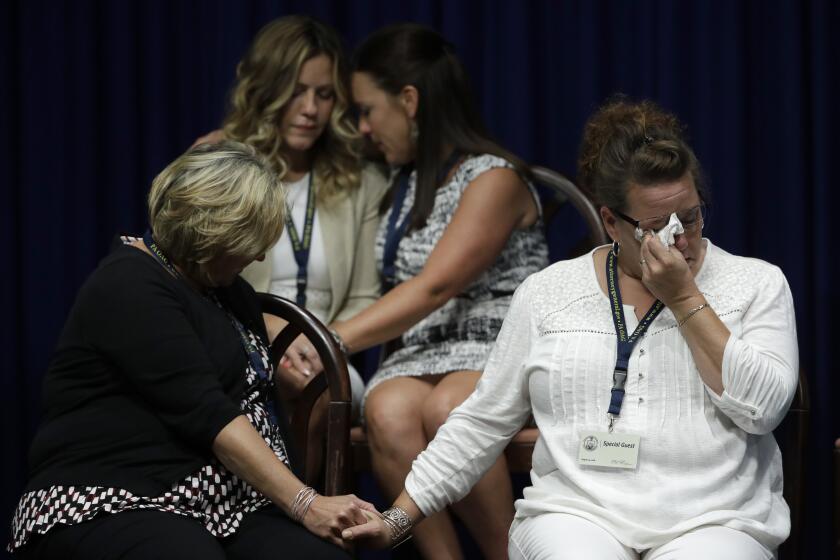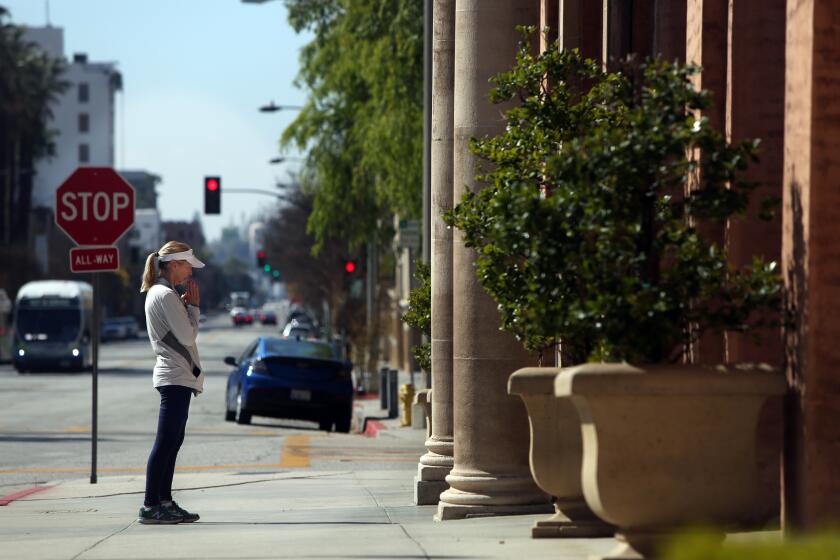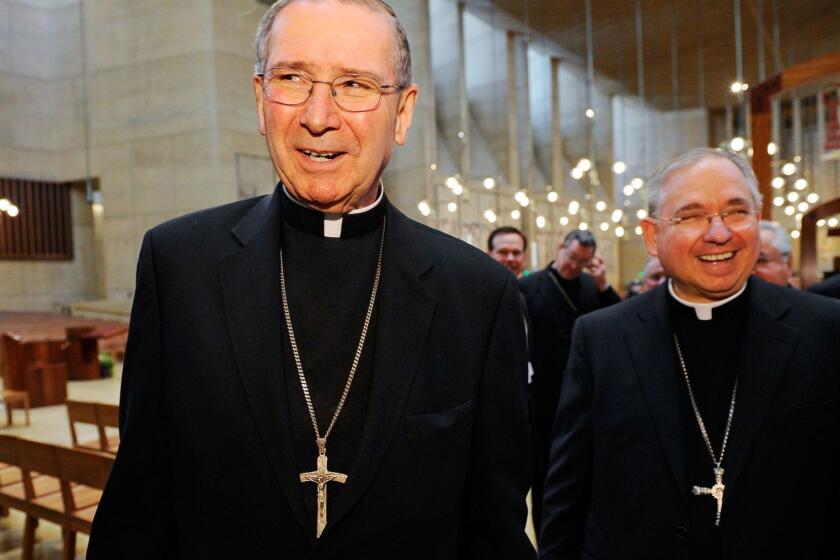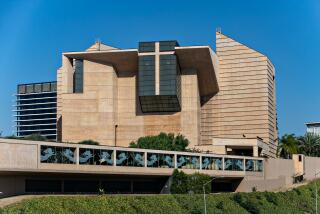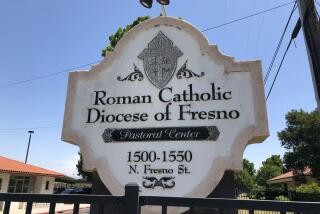After lobbying to be eligible, Catholic Church won at least $1.4 billion in PPP loans
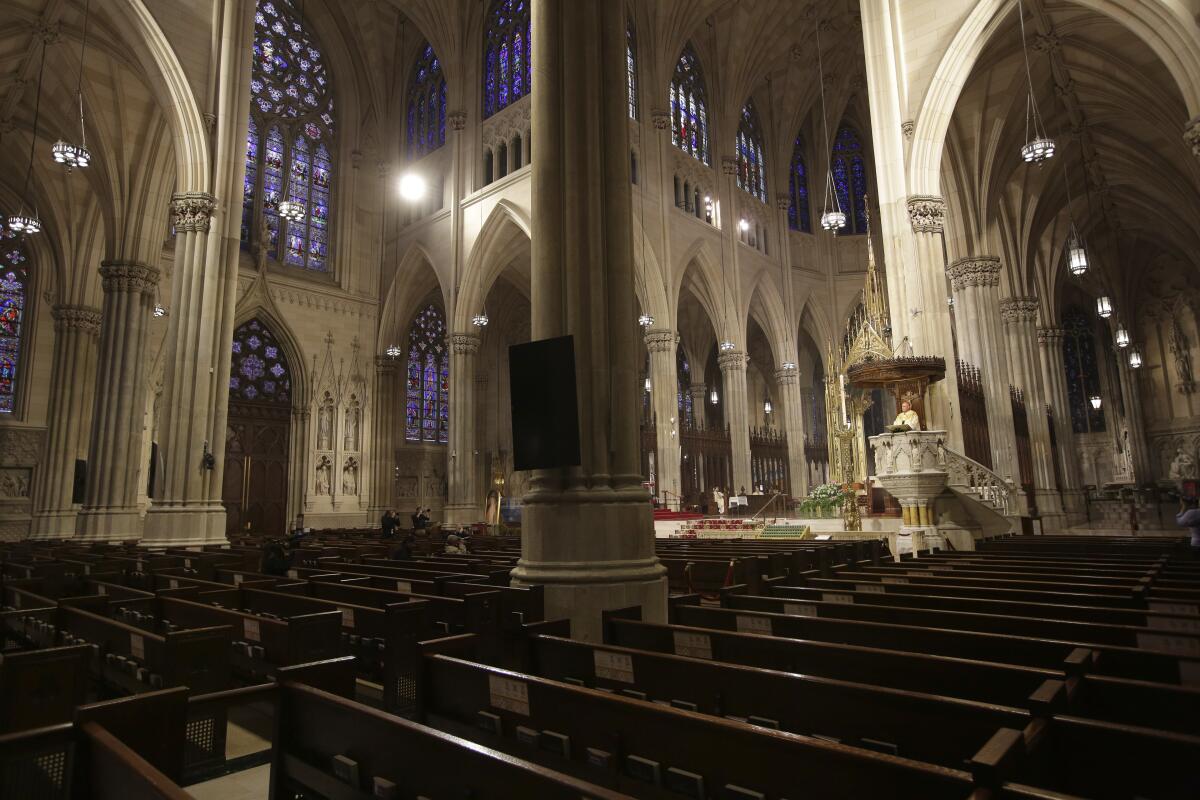
- Share via
NEW YORK — The U.S. Roman Catholic Church used a special and unprecedented exemption from federal rules to amass at least $1.4 billion in taxpayer-backed coronavirus aid, with many millions going to dioceses that have paid huge settlements or sought bankruptcy protection because of clergy sexual abuse cover-ups.
The church’s haul may have reached — or even exceeded — $3.5 billion, making a global religious institution with more than a billion followers among the biggest winners in the U.S. government’s pandemic relief efforts, an Associated Press analysis of federal data has found.
Houses of worship and faith-based organizations that promote religious beliefs aren’t usually eligible for money from the U.S. Small Business Administration. But as the economy plummeted and jobless rates soared because of the COVID-19 pandemic, Congress let faith groups and other nonprofits tap into the Paycheck Protection Program, a $659-billion fund created to keep Main Street open and Americans employed.
By aggressively promoting the program and marshaling resources to navigate its shifting rules, Catholic dioceses, parishes, schools and other ministries have so far received approval for at least 3,500 forgivable loans, AP found.
The Archdiocese of New York, for example, received 15 loans worth at least $28 million just for its top executive offices. Its iconic St. Patrick’s Cathedral on Fifth Avenue was approved for at least $1 million.
In Orange County, California, where a sparkling glass cathedral estimated to cost over $70 million recently opened, diocesan officials working at the complex received four loans worth at least $3 million.
A loan of at least $2 million went to the diocese covering Wheeling-Charleston, W.Va., where a church investigation revealed last year that then-Bishop Michael Bransfield embezzled funds and made sexual advances toward young priests.
U.S. Roman Catholic bishops tallied 4,434 sex abuse allegations against clergy in 2018-19 — triple the number from the previous year.
Simply being eligible for low-interest loans was a new opportunity. But the church couldn’t have been approved for so many loans — which the government will forgive if they are used for wages, rent and utilities — without a second break.
Religious groups persuaded the Trump administration to free them from a rule that typically disqualifies an applicant with more than 500 workers. Without this preferential treatment, many Catholic dioceses would have been ineligible because, between their head offices, parishes and other affiliates, they exceed the 500-person cap.
“That favoritism was worth billions of dollars,” said Micah Schwartzman, a University of Virginia law professor specializing in constitutional issues and religion who has studied the Paycheck Protection Program.
The AP tally of how much the church collected, between $1.4 billion and $3.5 billion, is an undercount. The Diocesan Fiscal Management Conference surveyed members and reported that about 9,000 Catholic entities received loans. That is nearly three times the number of Catholic recipients the AP could identify.
Workers furloughed from Pasadena’s St. Andrew Catholic Church said the move has left them feeling abandoned and angry.
The government’s data, released this week after pressure from Congress and a lawsuit from news outlets, didn’t name recipients of loans under $150,000 — a category in which many smaller churches would fall. And because the government released only ranges of loan amounts, it is not possible to be more precise as to the total of identifiable loans to Catholic entities.
The Paycheck Protection Program was open to all religious groups, and many took advantage. Evangelical advisors to President Trump received loans, as did many big-name churches.
There is no doubt that state shelter-in-place orders disrupted houses of worship and businesses alike. Masses were canceled, depriving parishes of expected revenue and contributing to layoffs in some dioceses.
But other problems were self-inflicted. Long before the pandemic, scores of dioceses faced financial pressure because of a dramatic rise in recent clergy sex-abuse claims.
580,000 California businesses received PPP loans in the last 3 months, leaving few parts of the economy untouched.
The scandals that erupted in 2018 reverberated throughout the world, propelled by a damning grand jury report about abuse in six Pennsylvania dioceses which revealed bishops had long covered for predator priests.
As the church again reckoned with its longtime crisis, dioceses and religious orders shelled out $282 million during the year ending June 2019 — up from $106 million just five years earlier.
Paycheck Protection loan recipients included about 40 dioceses that have spent hundreds of millions of dollars in the past few years paying victims. AP’s review found these dioceses were approved for about $200 million, though the value is likely much higher.
One was the New York Archdiocese. Spokesperson Joseph Zwilling said the archdiocese simply wanted to be “treated equally and fairly under the law.” When asked about the waiver from the 500-employee cap that religious organizations received, Zwilling deferred to the U.S. Conference of Catholic Bishops.
The California attorney general’s investigation into how the Los Angeles Archdiocese — and potentially other dioceses in California — handled abuse allegations over the years is a major step for prosecutors.
A spokesperson for the bishops’ conference acknowledged that its officials lobbied for the paycheck program, but said the organization wasn’t tracking what dioceses and Catholic agencies received.
“These loans are an essential lifeline to help faith-based organizations to stay afloat and continue serving those in need during this crisis,” spokesperson Chieko Noguchi said in a written statement. According to the AP’s data analysis, the church and all its organizations reported retaining at least 407,900 jobs with the money they were awarded.
Noguchi also wrote that the conference felt strongly that “the administration write and implement this emergency relief fairly for all applicants.”
Not every Catholic institution sought government loans. The Ukrainian Catholic Eparchy based in Stamford, Conn., told the AP that even though its parishes experienced a decline in donations, none of the organizations in its five-state territory submitted applications.
Deacon Steve Wisnowski, a financial officer for the eparchy, said pastors and church managers used their rainy-day savings and that parishioners responded generously with donations. As a result, parishes “did not experience a severe financial crisis.”
Wisnowski said his superiors understood the program was for “organizations and businesses truly in need of assistance.”
More to Read
Sign up for Essential California
The most important California stories and recommendations in your inbox every morning.
You may occasionally receive promotional content from the Los Angeles Times.
